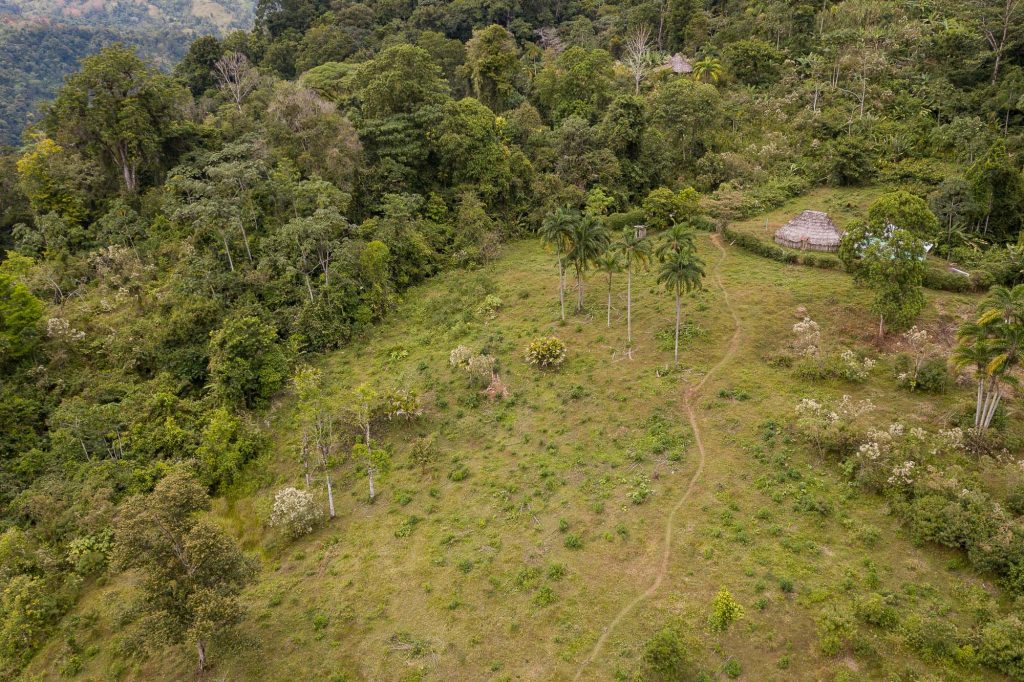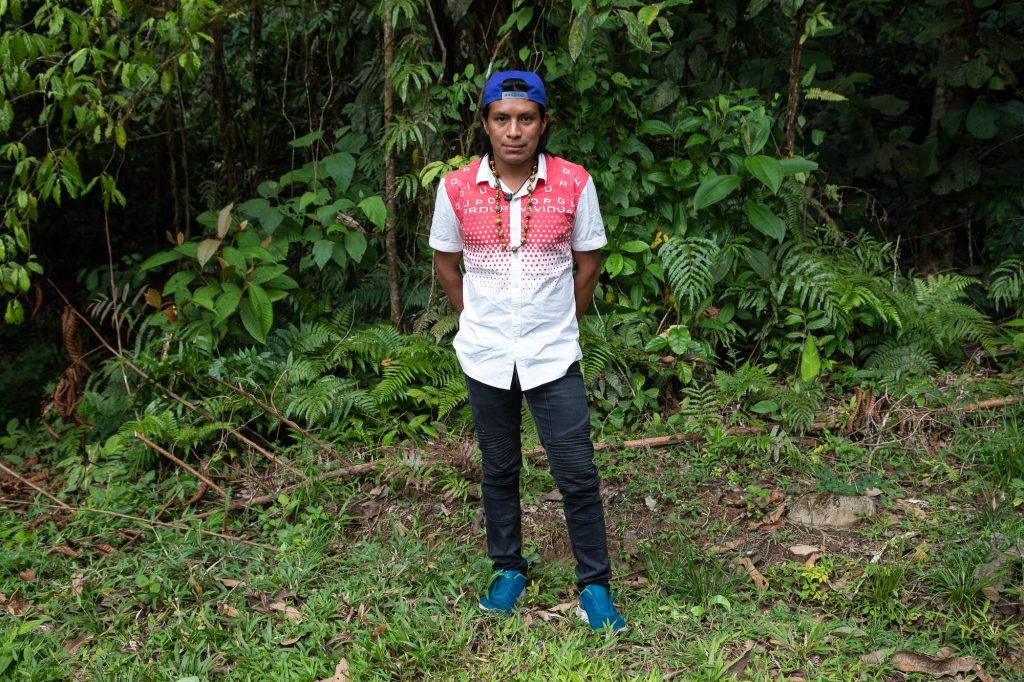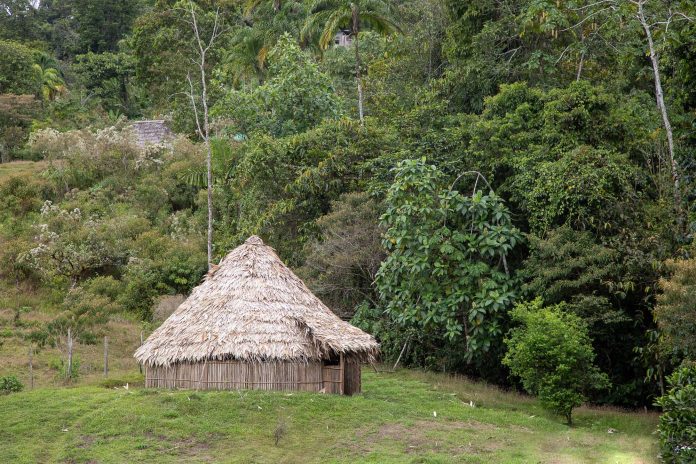Costa Rica is widely renowned for one kind of diversity—biodiversity. But as we’ve seen during this five-part series on indigenous tourism, cultural diversity is also a vibrant reality.
In this final installment, we’re going to talk about two groups that further support our argument: the Cabécar and Chorotega peoples. There are many differences between these ethnic groups. However, they also have much in common, both with each other and with Costa Rica’s six other indigenous peoples, five of which we’ve examined closely in this series.
Diversity and similarities
Let’s start by talking about the landscape that surrounds them.
The Cabécar indigenous communities are distributed among eight indigenous territories among the mountains of the Cordillera de Talamanca. As the mountain range rises from sea level, tropical rain forest becomes cloud forest, then moorlands or páramo.
The Chorotegas live in a single territory on the Nicoya Peninsula, home to Central America’s southernmost dry tropical forest.
The Cabécar people are the second most numerous in Costa Rica, according to the 2011 Census of the National Institute of Statistics and Census (INEC), after the Bribri group, which lives on both the Pacific and Caribean slopes of the Talamanca mountains. The Chorotegas are the second smallest indigenous people, after the Maleku community.
Like the Térraba, Bribri, Boruca, Ngöbe y Maleku, the territories of the Cabécar and Chorotega peoples are partially in the hands of non-indigenous people, “even recently acquired by them,” recounts Ezequiel Aguirre. He is a Chorotega rural tourism entrepreneur and a resident of the Matambú territory on the Nicoya Peninsula.
“[There are] many landless indigenous people within the territory,” Ezequiel adds. This problem has also been discussed in our series by Hiqui Morera Castro and Lourdes Frasserwho are Maleku and Boruca women and indigenous tourism entrepreneurs in their respective territories.

“Other problems are illegal logging and fishing by non-indigenous people, hunting, and environmental damage,” says Leonardo Martines, a Cabécar tourism entrepreneur in the Nairi Awari indigenous territory, located in Siquirres and Matina de Limón. Although the other indigenous people interviewed for this series have not made direct reference to this problem, it would not be surprising if they also face this other type of usurpation of their territories.
Chorotega people and the Matambú indigenous territory
The Matambú indigenous territory was the second ever defined by the Costa Rican government, in 1980. The only territory established before Matambú was the Guatuso territory, belonging to the Maleku ethnic group.
However, of all the indigenous peoples in Costa Rica, the Chorotega who live in Matambú have preserved their original culture the least—to the point that the language has already been completely lost.
“We are descendants of indigenous Mexican and Mayan peoples who came to populate the great Nicoya, and whose coverage extended from beyond Lake Nicaragua to the Gulf of Nicoya,” says Ezequiel. “[They were] peoples that stood out for being pioneers in agriculture and pottery. With the Spanish invasion, entire populations were wiped out, and those who remained were turned into slaves.”
This indigenous group is known for its pottery. Communities such as Guaitil de Santa Cruz de Guanacaste are tourist destinations recognized for the manufacture and sale of Chorotega clay handicrafts by organizations such as Coopeguaytil (read more about this cooperative in El Colectivo 506). However, dispite its reputation as the cradle of Chorotega crafts, Guaitil is not a part of the Matambú indigenous territory.

Clay pieces are also produced and sold within the territory, and there is an increasing variety of tourism services available. The destination is a convenient stop for any traveler visiting the beaches of Guanacaste.
“I started the tourism [project] by demonstrating a need and, on the other hand, the strengths that exist in the community in general,” says Ezequiel, who is the founder and owner of the Ecotourism, Cultural and Craft project for the rescue of culture. Chorotega,Namu Nekupe.
“In my case, I offer accommodation with a cabin in the woods, trails through the forest to a waterfall, pools. Dragon fruit production. Meliponiculture of pre-Hispanic bees that do not have stings, which produce an exquisite and 100% medicinal honey. And the highlight: the clay crafts workshop, where we teach the visitor how to make it and thus have a sui generis experience.”
He says that the Matambú territory also offers other enterprises that offer seed and fiber handicrafts, traditional foods and products derived from corn, lodging, and horticulture.
“[Matambú is the] only indigenous territory in the world that’s located within a Blue Zone,” says Ezequiel. A Blue Zone is defined as a place where the number of people who live to 100 is up to 10 times higher than in the rest of the world. There are only five Blue Zones on the planet: Okinawa, Japan; Sardine, Italy; Loma Linda, California; Ikaria, Greece; and the center of the Nicoya Peninsula, with Matambú at its heart.
Because of this, there’s a lot to be learned during a visit to this territory—even though very little remains of the Chorotega worldview, practices and and traditions.
“The inhabitants [of Matambú] are humble workers,” says Ezequiel. “Noble, hospitable families, very united, respectful of nature and people with a lot of faith.”

Cabécar people and the Nairi Awari indigenous territory
“The Nairi Awari indigenous territory… maintains 100% of our mother tongue, traditions and ancestral practices. We maintain our own worldview, our own beliefs,” says Leonardo. He is a co-founder of Ethnotourism Tsiöbata in Nairi Awari, which offers visitors the opportunity to experience Cabécar indigenous culture.
According to the 2011 INEC Census, 87.6% of the Cabécar population of Costa Rica still speak their language—a higher rate than any other indigenous group in Costa Rica. The Cabécar also have the largest number of territories (eight in total), and are the second largest group with a population of almost 14,000 people. Almost 500 people live in Nairi Awari, an indigenous territory established in 1991.
“There are approximately 18 families, 80% of which benefit directly [from the Tsiöbata Ethnotourism project] with [the sale of] handicrafts, food, and guides,” says Leonardo. “And 100% [benefit] from the path, since the trail where the clients walk is our only access. Since we are improving the trail, it is very beneficial for everyone as they go out to run errands.”
Tourism entrepreneurship in the Tsiöbata community is very young, according to Leonardo: barely five years old.
“The first two years were very difficult. There was no one to contact: We had no alliances,” he says. However, “we knew that we are a power for tourism.” Things started to change when the community got in touch with the Mar a Mar Asociation, the facilitator of El Camino de Costa Rica (read more about this route en El Colectivo 506). Since then, the territory’s various tourism efforts have grown.

“The activities we do are camping, guided tours, food service, talks about the indigenous worldview—but above all, to explore the virgin forests of our territory,” says Leonardo. He says that a group of women have formed a group called Alaklä wa tjaneble, which translates as “Women Entrepreneurs.” They produce and sell handicrafts and offer food services for visitors.
“Those who visit us can know that they are leaving something good behind, because they are supporting our efforts. It is not only one or two people who participate in Ethnotourism de Tsiöbata; there are several families who are part of the project,” Leonardo explains. “For example, we buy products such as tubers from families in the community, thus dividing the income we generate among multiple families. Also, to maintain the path, the cosmogonic house, and the bathrooms, we send people to do the work and they are paid for all these jobs.
“I believe that this can help us grow as a community, always focused on our own worldview, our culture,” he says. “The idea is to focus more on conserving what is unique to us.”
However, Leonardo adds that the impact of tourism in his community goes beyond strengthening the culture and well-being of the Cabécar people who inhabit Nairi Awari.
“We are confident that tourism can have a positive impact so that people who are hunt or fish illegally do not come [into the territory] anymore, or do not do those practices anymore,” he says: The more traffic there is on the trails in the territory, the better life will be for the biodiversity that Nairi Awari protects.







